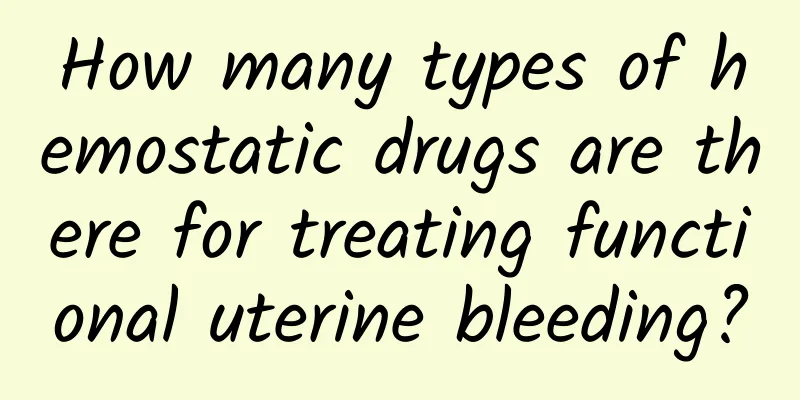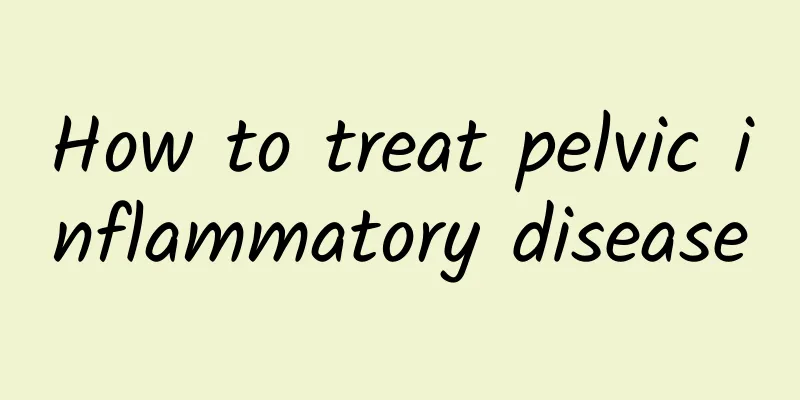How many types of hemostatic drugs are there for treating functional uterine bleeding?

|
Dysfunctional uterine bleeding is mainly manifested by prolonged menstruation and excessive bleeding, which often causes anemia in patients. It can be seen that hemostatic drugs play an extraordinary role in the treatment of functional uterine bleeding. In order to help everyone better understand functional uterine bleeding, we will introduce you in detail several commonly used hemostatic drugs in clinical practice. (1) Progestin-induced anovulatory dysfunctional uterine bleeding is caused by a single androgen stimulation. Progestin supplementation causes the endometrium in the proliferative phase or overproliferative phase to transform into the secretory phase. After drug withdrawal, the endometrium sheds and withdrawal bleeding occurs. Since this type of endometrial shedding is more thorough, it is also called "drug-induced curettage". It is suitable for patients who already have a certain level of estrogen in their bodies. (2) Estrogen application: High doses of estrogen can rapidly increase the estrogen concentration in the blood, promote the growth of the endometrium, repair the wound surface and stop bleeding in a short period of time. It is suitable for those with endogenous estrogen deficiency, mainly for adolescent functional uterine bleeding. (3) Androgens Androgens can reduce the amount of bleeding. However, when bleeding is severe, androgens cannot immediately change the process of endometrial shedding or repair it quickly, so they are not effective when used alone. (4) Combination therapy: Since the hemostatic effect of sex hormone combination therapy is better than that of single drug, when progesterone is used to stop bleeding in adolescent functional uterine bleeding, a small dose of estrogen is also used to overcome the deficiency of single progesterone therapy, reduce the amount of progesterone, and prevent breakthrough bleeding. (5) Non-steroidal anti-inflammatory drugs Many experts believe that dysfunctional uterine bleeding is related to prostaglandin (PG) synthesis. (6) Anti-prostaglandin drugs: Taking prostaglandin synthase inhibitors such as flufenamic acid 200 mg 3 times a day during bleeding can reduce bleeding during endometrial exfoliation. (7) Antifibrinolytic drugs (8) Other hemostatic drugs |
<<: The incidence of dysfunctional uterine bleeding
>>: What are the common complications of functional uterine bleeding?
Recommend
Is the Chinese medicine treatment for second-degree cervical erosion effective? How to treat second-degree cervical erosion?
Cervical erosion is the most common gynecological...
What medicine can treat vulvar itching?
There are many symptoms of vulvar pruritus, and p...
Long-term stimulation of chronic inflammation can easily lead to cervical hypertrophy
For us, cervical hypertrophy is a very common fem...
How long does it take to walk after a medical abortion?
How long after medical abortion can I walk again?...
The harm that bacterial vaginosis can cause to women
Are you still worried about how to treat bacteria...
Let me tell you in detail about the common dangers of cervical hypertrophy
Cervical hypertrophy is a very harmful gynecologi...
What should I do if my period is delayed during breastfeeding?
What should I do if my period is delayed during b...
Various gynecological diseases may also be the culprit of dysmenorrhea
Although many women are troubled by dysmenorrhea,...
What are the precautions after abortion?
After an abortion, our female friends are relativ...
Is there any way to self-check congenital absence of vagina?
Congenital absence of vagina is a serious problem...
What should I pay attention to in my diet if I have cervical warts?
Everyone must know the harmfulness of cervical wa...
What to do if the menstrual blood clots do not come out and the lower abdomen hurts
What should I do if my lower abdomen hurts and th...
What causes adnexitis in women?
Adnexitis mainly refers to the inflammation cause...
Eating lotus root in autumn can strengthen the spleen and stomach ~ People with bloating and diabetes should not eat too much lotus root
Autumn is the season for tasting fresh lotus root...
Does masturbating too much affect menstruation for girls? What are the dangers?
In fact, in real life, not only male friends will...









